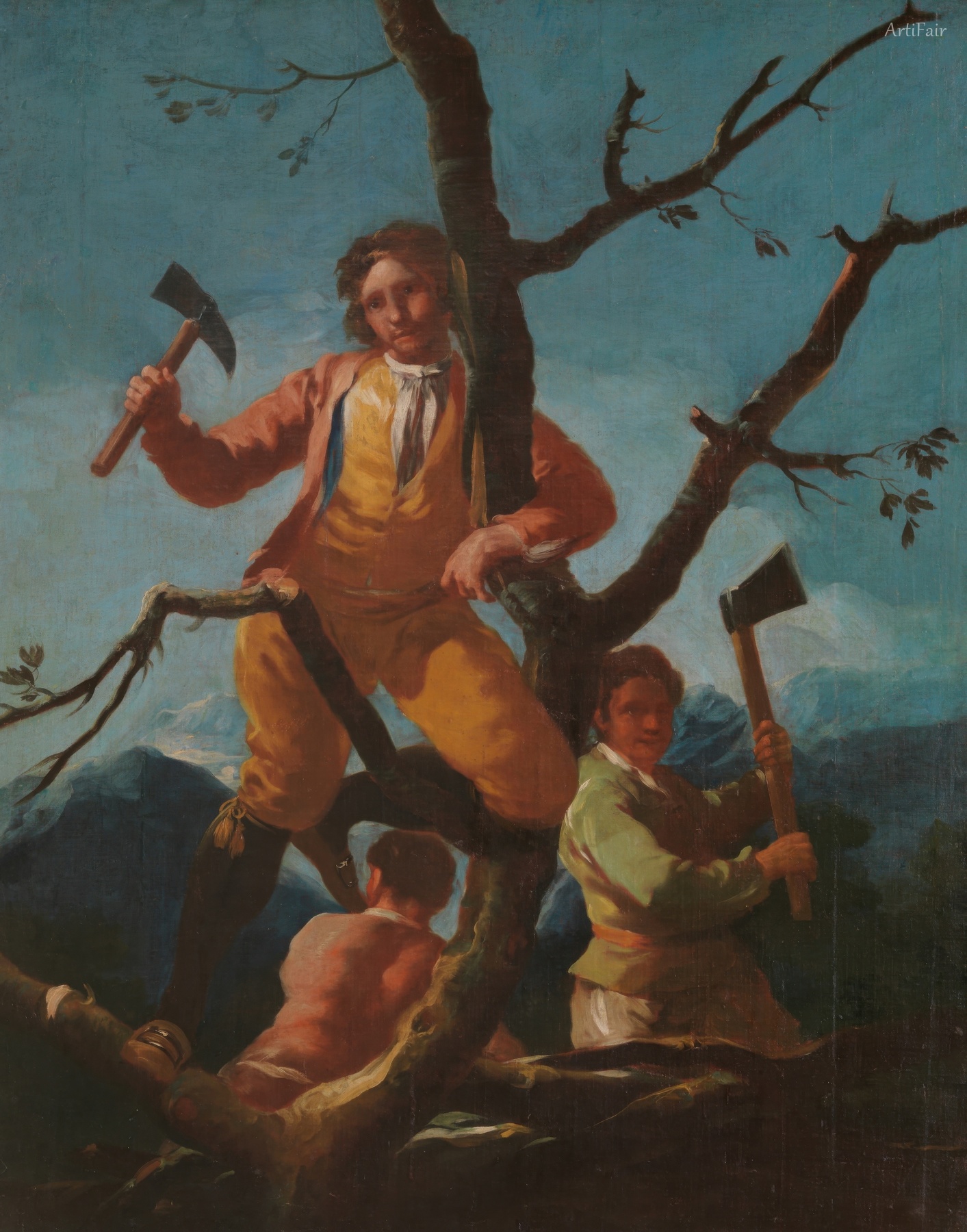
Art Appreciation
In this vivid portrayal, three woodcutters are caught mid-action, surrounded by the rugged branches of a leaf-sparse tree that seems to claw the serene blue sky. The focal figure, clad in a vibrant yellow waistcoat and an earthy orange coat, exudes a raw vitality as he perches confidently on a forked branch, axe raised boldly in one hand, a stance brimming with the promise of industry and strength. His determined gaze pierces the canvas, creating a powerful connection with the viewer. Nearby, a young shirtless boy and another figure in subdued tones join the narrative; their presence adds depth to the scene, drawing us into the rhythm of labor and the unity among men tied to nature’s relentless demands. The background tells of mountainous terrain beneath a tranquil sky, a stiff contrast to the dynamic bodies foregrounded.
Executed with rich, earthy tones and a masterful use of chiaroscuro, the painting wields natural light to sculpt muscular forms and cracked bark – textures so tangible you could almost feel the coarseness of wood and the grit under fingernails. The composition’s diagonal branches generate a vigorous movement, guiding the eyes upwards while also anchoring the figures firmly in place. Goya’s technique breathes life into this rustic scene, layering brushstrokes that fade softly into the sky, balancing realism with an almost theatrical drama. Emotionally, the piece resonates with resilience and camaraderie, evoking an era when manual labor was both a noble craft and a testament to human endurance. Born in the late 18th century, the work subtly reflects Enlightenment values emphasizing hard work, connection to nature, and the dignity found in everyday toil. It’s a celebration of humble workers framed with a grandeur that elevates their daily grind into heroic endeavor.